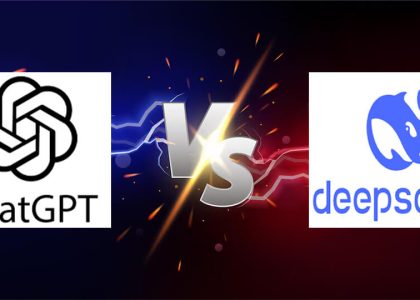On-page SEO optimization is crucial for boosting your website’s visibility in search engine results.
It involves refining various elements within your website to ensure that search engines understand the content and rank it more favorably. This post will dive into the details of on-page SEO optimization, how to carry it out, and the advantages it offers.
What is On-page SEO?
On-page SEO refers to the strategies you implement directly on your website to improve its ranking in search engine results. This optimization encompasses aspects such as content structure, page titles, internal linking, and more. The goal is to make the content more accessible to search engines and users alike, resulting in better ranking and engagement.
Steps to Implement On-page SEO Optimization
- Conducting Keyword Research and Proper Usage
To start optimizing your content, you need to identify relevant keywords. Tools such as Google Keyword Planner, SEMrush, and Ahrefs can assist in finding suitable keywords. After selecting your keywords, here’s how you should use them:
Page Titles: Make sure the title of your page includes your main keyword, ideally towards the beginning.
URLs: Create clean, simple URLs that include your keyword, such as “www.monirmia.com/on-page-seo“
Headings: Use H1, H2, and H3 tags for structuring the content and place the target keyword in one of the headings.
Content Body: Integrate your main keyword naturally throughout the article.
- Crafting Valuable and Engaging Content
Search engines prioritize content that is comprehensive, relevant, and helpful to users. When creating content, focus on providing detailed information that adds value. Here’s how to do it:
In-depth Content: Cover every aspect of your topic thoroughly.
Answer Common Questions: Address common queries related to the topic.
LSI Keywords: Incorporate Latent Semantic Indexing (LSI) keywords, which are terms closely related to your main keywords, helping search engines better understand the context of your content.
- Optimizing Title Tags and Meta Descriptions
Title tags and meta descriptions are vital elements that influence how your content appears in search results. Optimizing them can significantly improve your click-through rate (CTR). Here’s how:
Title Tag: Ensure it includes the main keyword and is less than 60 characters.
Meta Description: Create a brief, compelling description (under 160 characters) that accurately reflects the content and includes the keyword.
- Mobile Optimization for Better Accessibility
Since Google uses mobile-first indexing, it prioritizes the mobile version of your site for rankings. To optimize for mobile:
Responsive Design: Make sure your website adjusts smoothly to various screen sizes for an optimal viewing experience on all devices.
Mobile-Friendly Test: Use Google’s Mobile-Friendly Test tool to check how well your website performs on mobile devices.
- Boosting Page Load Speed
The speed at which your page loads plays a significant role in both user experience and search engine ranking. Slow websites often result in high bounce rates, so optimizing page speed is essential.
Image Optimization: Compress images to reduce load time while maintaining quality.
Minify Code: Minimize the size of your CSS, HTML, and JavaScript files for quicker page rendering.
- Internal Linking for Better Site Structure
Internal linking refers to the practice of linking different pages within your website. This helps search engines comprehend the structure of your site and enhances its ability to crawl and index your content.
Link Relevant Pages: When appropriate, link to other pages within your site to create a logical structure and help users find additional valuable content.
- Optimizing Images with Alt Text
Alt text is important for search engines to understand the context of images, and it also benefits users who rely on screen readers. Make sure you add descriptive alt text to all images.
Alt Text Usage: Use relevant and descriptive alt text that reflects the content of the image and incorporates relevant keywords.
- Implementing Structured Data (Schema Markup)
Structured data, or schema markup, adds context to your content, allowing search engines to display rich snippets in search results. Implementing schema markup helps improve your visibility.
Schema Markup: Add structured data to your website to enhance the way it appears in search results and provide additional context to search engines.
Benefits of On-page SEO Optimization
Implementing effective on-page SEO optimization offers numerous advantages. Some of the key benefits include:
- Higher Search Engine Rankings
Optimizing your website’s content and technical elements improves its visibility in search engine results, increasing your chances of ranking higher. - Enhanced User Experience
An optimized website offers a better user experience, as it’s easier to navigate, loads faster, and provides relevant content. - Increased Organic Traffic
By optimizing for search engines, you can attract more organic visitors to your website, improving traffic and engagement. - Improved Conversion Rates
Optimized content helps your website reach the right audience effectively. When the traffic is relevant, conversion rates tend to increase as users are more likely to take desired actions. - Gain Competitive Advantage
When you focus on On-page SEO better than your competitors, you’ll have an edge in ranking and visibility, helping you stand out in your niche.
Conclusion
On-page SEO optimization is an essential component of digital marketing that helps you increase your website’s rankings, user engagement, and overall performance. By following the right practices, such as keyword optimization, creating quality content, and enhancing your website’s structure, you can significantly improve your site’s performance.
On-page SEO is an ongoing process, but with continuous effort, you’ll see better results over time, leading to increased visibility, traffic, and conversions.






